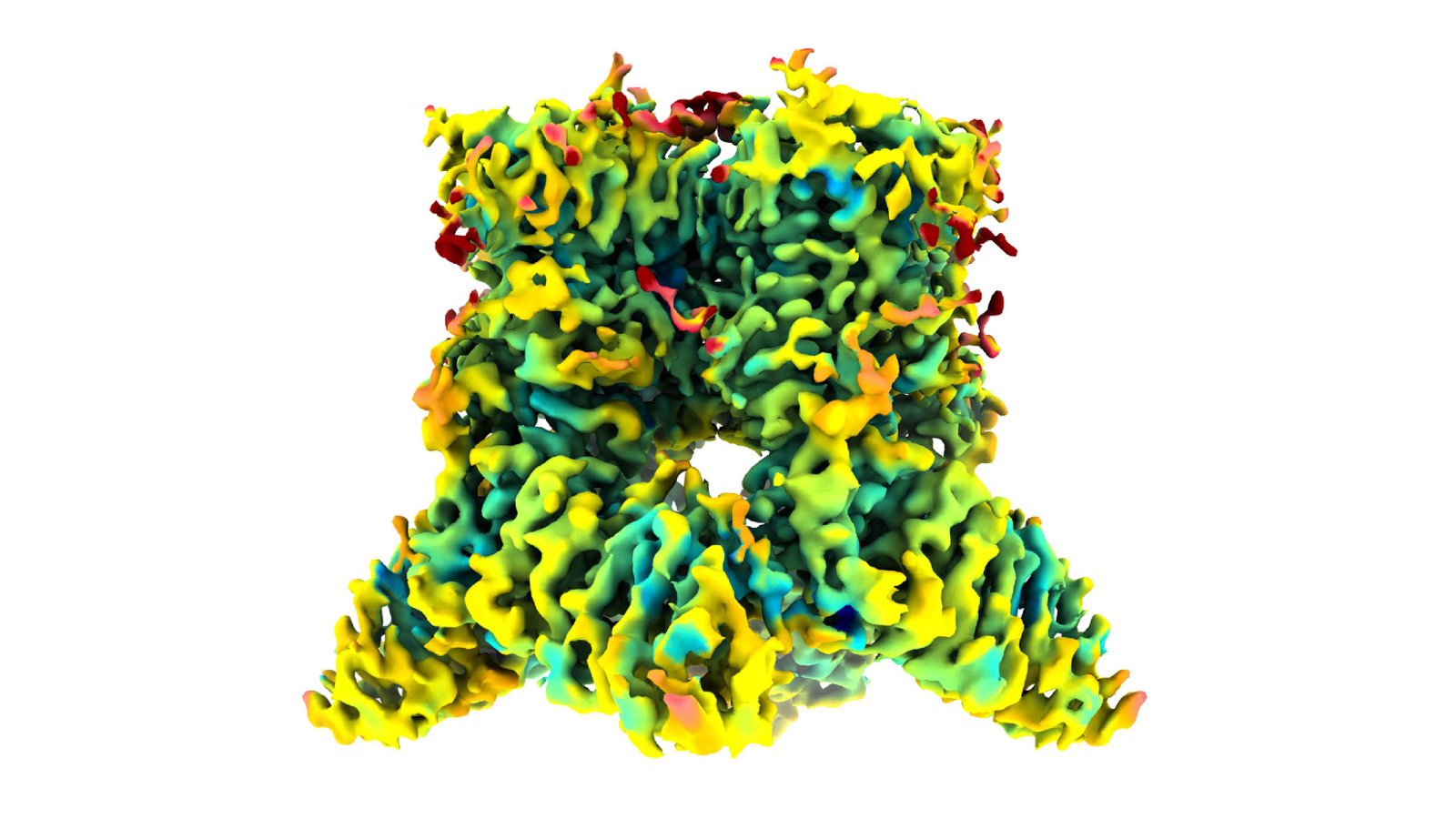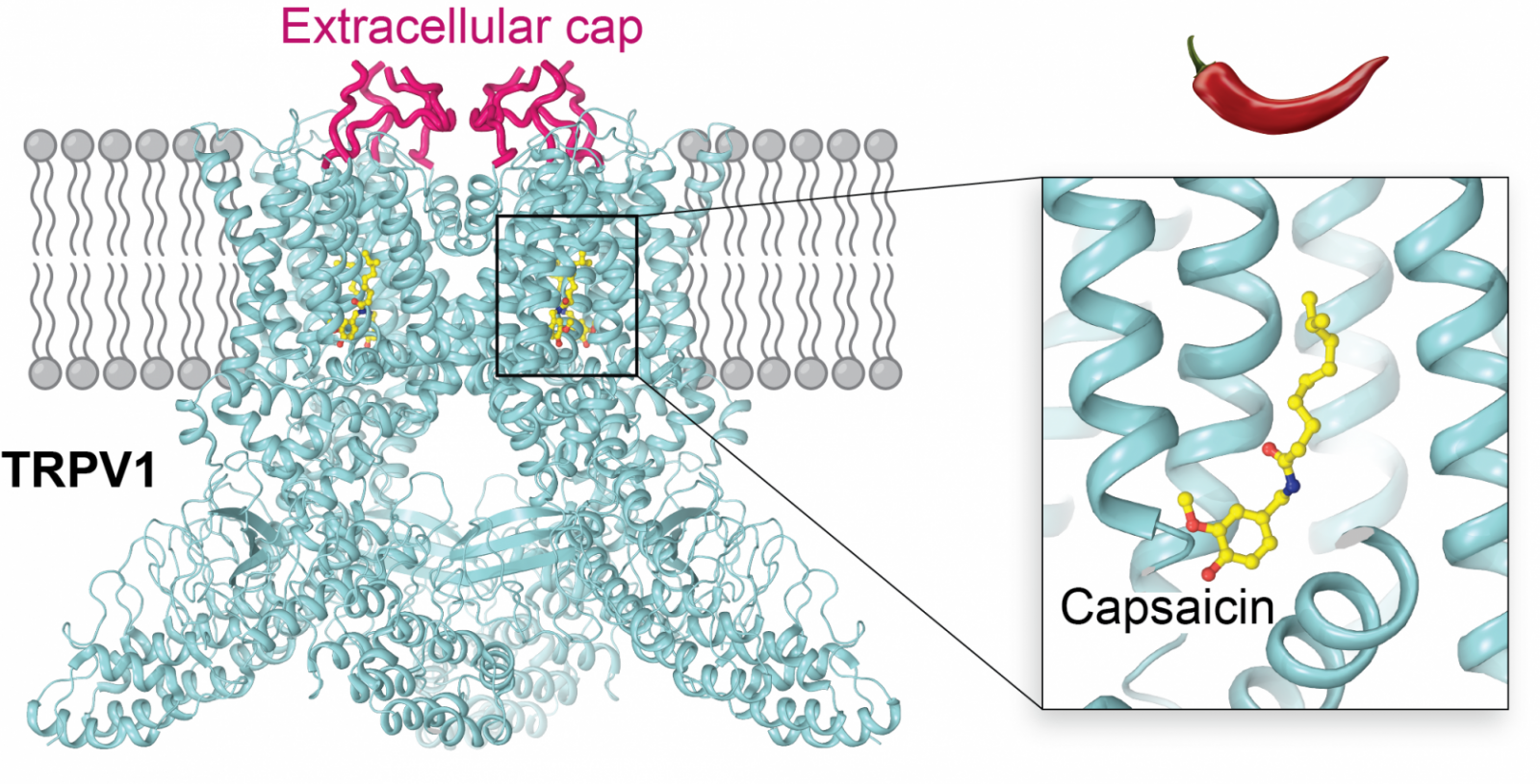The first complete high-res image of a heat-sensing molecule in ground squirrels is helping researchers understand how we sense temperature and could lead to the development of new pain relievers.
Ground squirrels, like other mammals, sense environmental temperatures with molecules called TRPV1 receptors that dot the surface of sensory nerves.

But unlike most mammals, ground squirrels love the heat. Ground squirrels-which look like a cross between a prairie dog and a chipmunk-thrive in hot climates, partly because their TRPV1 receptors are not activated by extreme heat. Even at temperatures of 115 F (46 C) degrees, ground squirrels are content, and their TRPV1 receptors remain unmoved.
"Understanding how the ground squirrel TRPV1 senses heat could also provide clues to how human TRPV1s sense heat, which is also not understood," says Alexander Sobolevsky, PhD, associate professor of biochemistry & molecular biophysics at Columbia University Vagelos College of Physicians and Surgeons, who led the imaging study.
To obtain images, the researchers first synthesized ground squirrel TRPV1 molecules in the lab and then put them under an electron microscope, using cryo-EM techniques pioneered by Columbia Nobel laureate Joachim Frank, PhD, professor of biochemistry & molecular biophysics.
The new images are the first of a full-size TRPV1 and they reveal that the receptor's cap-which previous studies had failed to capture-plays an essential role in temperature detection.
TRPV1 not only senses physical heat, it also detects the spicy heat of chili peppers but by a different mechanism. The researchers captured images of capsaicin, the molecule behind the heat, bound to TRPV1, which show that the molecule displaces an essential lipid in the cellular membrane that is also thought to be involved in sensing high temperatures. More research will be needed to fully understand how TRPV1 is activated by heat, capsaicin, and other molecules.

TRPV1 receptors are also involved in pain, and additional images should also help in the design of new pain relievers that target TRPV1. TRPV1 receptors also have been found outside the sensory system and are being investigated as treatments for inflammatory bowel disease, cancer, and other conditions.
"The new details we're getting from the complete image of TRPV1 are telling us how the molecule works," says Kirill Nadezhdin, a postdoctoral fellow in Sobolevsky's lab and first author of the paper, "which is information that can help in the design of new treatments."
References
More information
The study, titled "Extracellular cap domain is an essential component of the TRPV1 gating mechanism," was published April 12, 2021, in Nature Communications.
The authors: Kirill D. Nadezhdin (Columbia University), Arthur Neuberger (Columbia University), Yury A. Nikolaev (Yale University), Lyle A. Murphy (Yale University), Elena O. Gracheva (Yale University), Sviatoslav N. Bagriantsev (Yale University), and Alexander I. Sobolevsky (Columbia University).
The research was supported by the U.S. National Institutes of Health (grants 1R01NS091300, 1R01NS097547, R01CA206573, R01NS083660, and R01NS107253), and the U.S. National Science Foundation (grants 1754286, 1923127, and 1818086).
The work was performed at the Columbia University Cryo-Electron Microscopy Center, the National Center for CryoEM Access and Training (NCCAT), and the Simons Electron Microscopy Center located at the New York Structural Biology Center, supported by the NIH Common Fund Transformative High-Resolution Cryo-Electron Microscopy program (U24 GM129539), and by grants from the Simons Foundation (SF349247) and the New York State Assembly.
The authors declare no competing interests.






